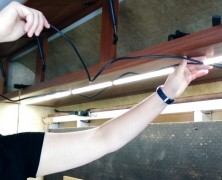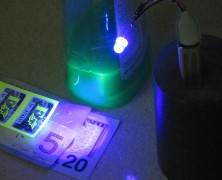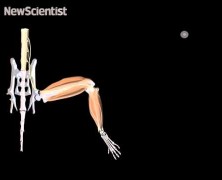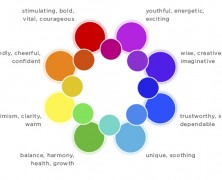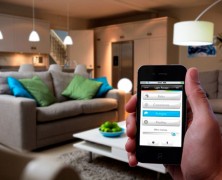Flexfire LEDs customer Don Bickley recently installed our ColorBright™ Natural White LED strip lights to provide task and ambient illumination in his unique travel trailer. Pleased with the product quality and service he received, Mr. Bickley felt inspired to write a rather thorough review on his blog. The review is part of a longer piece in which he provides great detail of his travel trailer LED strip light installation. We’ve excerpted some of it for you here below; head over to Explore With Don for his full review. Review Of Colorbright™ Natural White LED Strip From Flexfire LEDs, Inc. I was creating a map board in my travel trailer (TT) and I needed much better lighting than what I currently had. This is a review on an LED light strip that I chose. I installed the strip lighting under a cabinet for map board illumination in my TT cargo bay, and I installed 3 separate strips on the ceiling for general “room” lighting. At the bottom of this page is a link to my article detailing how I did this upgrade. I never much thought of using LED strip lighting before, but I’m now solidly sold on the idea. The install went easily, quickly, and I’m very satisfied with the results. There are many LED sellers out there, but I found FlexFireLEDs.com’s LED Lighting Specialist Ruy Lopes very informative and pleasant to deal with. Never once did he make me feel like I was wasting his time. He answered my questions, gave me advice, and guided me along. After much research (as always), I decided on FlexFire LEDs’ Colorbright™ LED strip light; based on Ruy’s recommendation, but also on the specs. They have light strips for nearly any type of application, whether that be for recreational, household, outdoor, or commercial needs. Other facts that persuaded me:...
What Are The Uses For UV LED Light?...
posted by Flexfire LEDs
Until relatively recently there was no such thing as a commercially available ultraviolet (UV) LED light. But as LED technology continues to develop and power densities increase, UV LED lights are expanding into the market and replacing more traditional alternatives. Ultraviolet (UV) light is an invisible form of electromagnetic energy (light energy) that travels at a higher frequency and carries more energy than visible light. UV lightwaves were originally called “chemical rays” when first discovered in the 19th century because of their ability to cause certain substances to change at the molecular level. Here are a few examples of the many applications for UV LED lighting: Industrial and Cosmetic Curing UV curing is a process that uses UV light to instantly cure (or “dry”) inks, coating and adhesives through cross-polymerization of photosensitive materials. UV LED technology is emerging as an ozone gas- and mercury-free option for chemical curing with both industrial and cosmetic applications. Nail polish cures have traditionally been done using unregulated UV lamps, but controversy arose earlier this year over a study published in the Journal of the American Academy of Dermatology which reported a potential danger of skin cancer. The study found that LED lamps were much safer for this application, due to the lower frequency of UV light they emit. Analytic Tools Due to UV lighting’s ability to make certain materials visible to the human eye, it has been used for quite some time as an analytic tool. One common use for ultraviolet light sources is checking UV watermarks to validate currency, or identifying bodily fluids in forensic crime scenes. Scientific and Biological A 2012 study published in Applied Entomology and Zoology showed that UV LED lights were an effective method for dealing with the West Indian sweet potato weevil. This disagreeable insect...
LED Light Beats Paralysis...
posted by Flexfire LEDs
Straight from the pages of science fiction, a team at King’s College in London has reversed paralysis using stem cell neurons treated with blue LED light. The trials took place in April of this year, during which scientists were able to restore muscular function in the formerly paralyzed legs of mice. The Wall Street Daily recently followed up with a report confirming the vital role that LED light played in this experiment. Additional testing is now being done to create a usable model for human trials, and time will tell if indeed LED light beats paralysis for good. The team used stem cells that contained neurons with a unique twist – a light sensitive gene that has the same biological structure as marine algae. These specially engineered cells were implanted into the exposed nerves of a paralyzed mouse, and then things really got interesting. The cells were exposed to blue LED light, and this triggered a connection between the nerve and the muscle, which essentially reverses paralysis. Scientists were able to adjust the intensity of the muscle’s contraction simply by varying the duration, intensity, and frequency of the LED light flashes. This procedure shows promise for restoring muscular function in individuals who suffer from spinal cord injuries and motor neuron diseases. Further, it is a dramatic improvement over existing paralysis treatments that use electrical stimulation, which are often painful and cause rapid muscle fatigue. In practice, this will basically be a tiny optical pacemaker that has a blue LED light built into it. The implanted pacemaker will consistently flash light onto the special neurons, thus allowing normal muscular function. The team at King’s College plans to develop this pacemaker within the next five years....
LEDs and the Psychology of Light and Color...
posted by Flexfire LEDs
“LIGHT reveals the glories of the external world and yet is the most glorious of them all. It gives beauty, reveals beauty and is itself most beautiful. It is the analyzer, the truth-teller and the exposer of shams, for it shows things as they are.” Edwin D. Babbitt, Principles of Light and Color While interior design plans give plenty of attention to wall paint and floor colors, lighting plays a critical role that is too often overlooked. Color and lighting influence our psychological functioning and well-being on a day-to-day basis, and understanding these influences is important when creating “human-centric” spaces. Designers have been using advanced color knowledge in this way for years, and the customizability of LED lighting now allows them to do the same with light. Let’s take a closer look at LEDs and the psychology of light and color. Humanity’s fascination with color has been with us since the dawn of civilization, with different colors used to symbolize and express various moods in ancient artwork spanning from Greece to Tibet. Color theory can be somewhat subjective, as certain colors elicit varying reactions in individuals based on personal preference and cultural backgrounds. It’s a truly interesting scientific field, and a great deal of thought has gone into exploring the psychological effects of color. One way of comparing colors in the visible spectrum is to divide them into “warm” and “cool” categories. The warm colors include red, orange, and yellow—think of the sun setting on the beach, or maple leaves strewn across the yard in early fall. These colors generally convey passion, positive energy, enthusiasm and happiness. In contrast, the cool colors include green, blue and purple—think of a solitary walk on a full moon night, or the depth of the ocean sea beneath a sleeping fisherman’s boat. Those colors convey...
Home Automation LED Lighting Systems...
posted by Flexfire LEDs
How would you like an LED lighting system in your home that matched your body’s natural rhythms, optimizing your mental and emotional well-being? Or how about LED strip lights connected to motion sensors that guide you to the bathroom in the middle of the night? With home automation LED lighting systems, these are fully feasible options for today’s 21st century home owner. A home automation system uses wireless networking technology to program and remotely control common household systems including lighting, appliances, HVAC (heating, ventilation and air conditioning), or the locks of gates and doors, among other common home necessities. Rightfully so, there has been quite a bit of attention given to home automation in recent years. Home automation LED lighting systems, for instance, are more convenient, more energy efficient, and ultimately more exciting than traditional home lighting systems. Such systems exemplify the use of technology for real human benefit, in contrast to many convoluted technological “solutions” that make things even more difficult. Simplicity is a tremendously important feature as the world looks to reduce its carbon footprint through the automation of routine tasks. How do home automation LED lighting systems work? Imagine your home with a full network of LED lights that you can control with an app on your phone or computer. Not quite sure what that would look like? Here are a few examples of the kind of control you would have: Motion sensors turn on/off and dim automated LED lights when you enter or leave rooms Turn off all the interior lights in your home with a simple click of an app button Use your smartphone to remotely monitor and adjust the lighting in your home while away on vacation An intelligent lighting system that turns on the lights at sunset and turns them off...






